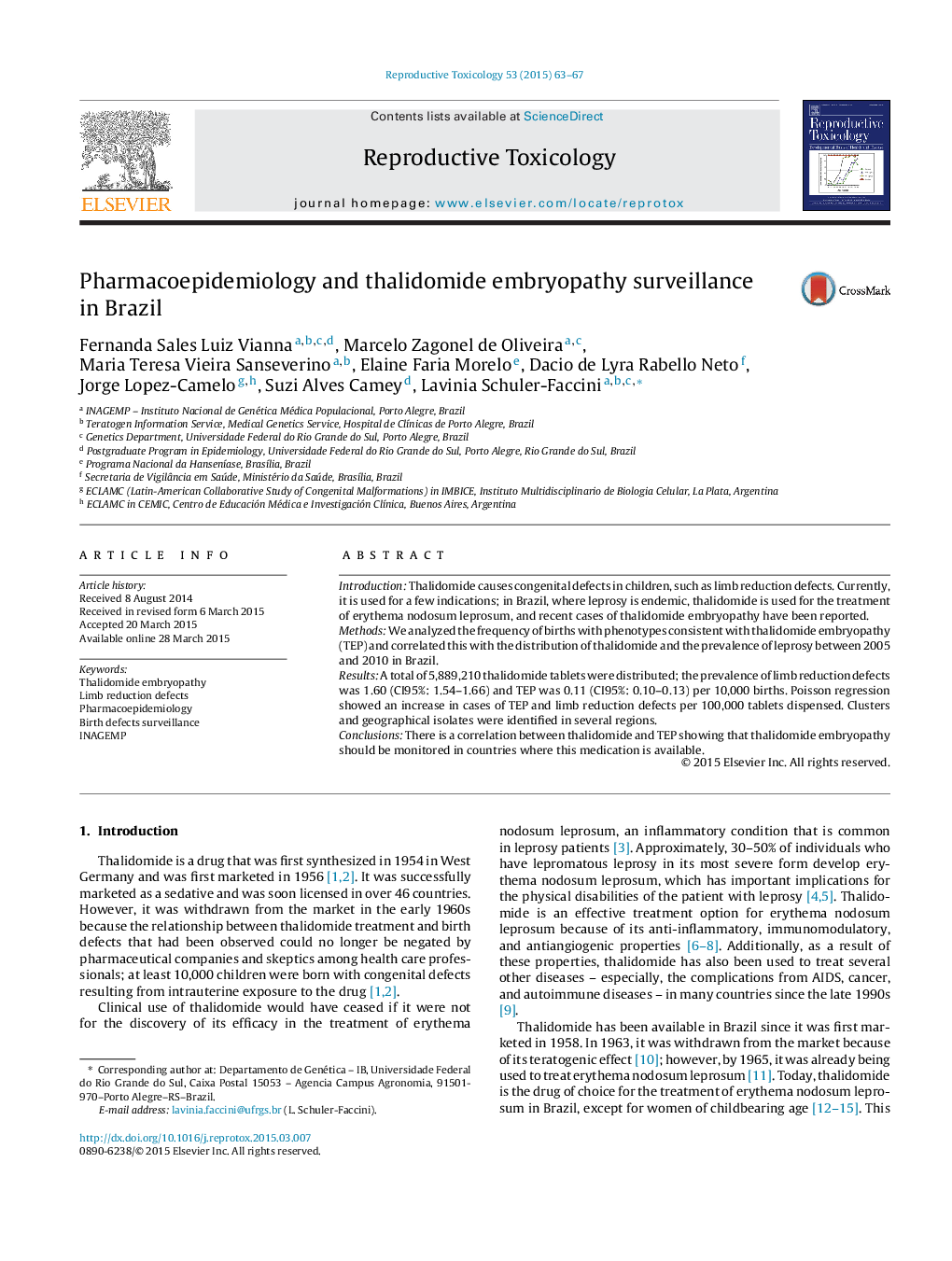| کد مقاله | کد نشریه | سال انتشار | مقاله انگلیسی | نسخه تمام متن |
|---|---|---|---|---|
| 2593471 | 1562166 | 2015 | 5 صفحه PDF | دانلود رایگان |

• More than 5 million tablets of thalidomide were distributed in Brazil in previous years.
• Cases of thalidomide embryopathy phenotype occur in clusters in leprosy regions.
• Occurrences of thalidomide embryopathy phenotype and thalidomide distribution are correlated.
IntroductionThalidomide causes congenital defects in children, such as limb reduction defects. Currently, it is used for a few indications; in Brazil, where leprosy is endemic, thalidomide is used for the treatment of erythema nodosum leprosum, and recent cases of thalidomide embryopathy have been reported.MethodsWe analyzed the frequency of births with phenotypes consistent with thalidomide embryopathy (TEP) and correlated this with the distribution of thalidomide and the prevalence of leprosy between 2005 and 2010 in Brazil.ResultsA total of 5,889,210 thalidomide tablets were distributed; the prevalence of limb reduction defects was 1.60 (CI95%: 1.54–1.66) and TEP was 0.11 (CI95%: 0.10–0.13) per 10,000 births. Poisson regression showed an increase in cases of TEP and limb reduction defects per 100,000 tablets dispensed. Clusters and geographical isolates were identified in several regions.ConclusionsThere is a correlation between thalidomide and TEP showing that thalidomide embryopathy should be monitored in countries where this medication is available.
Journal: Reproductive Toxicology - Volume 53, June 2015, Pages 63–67